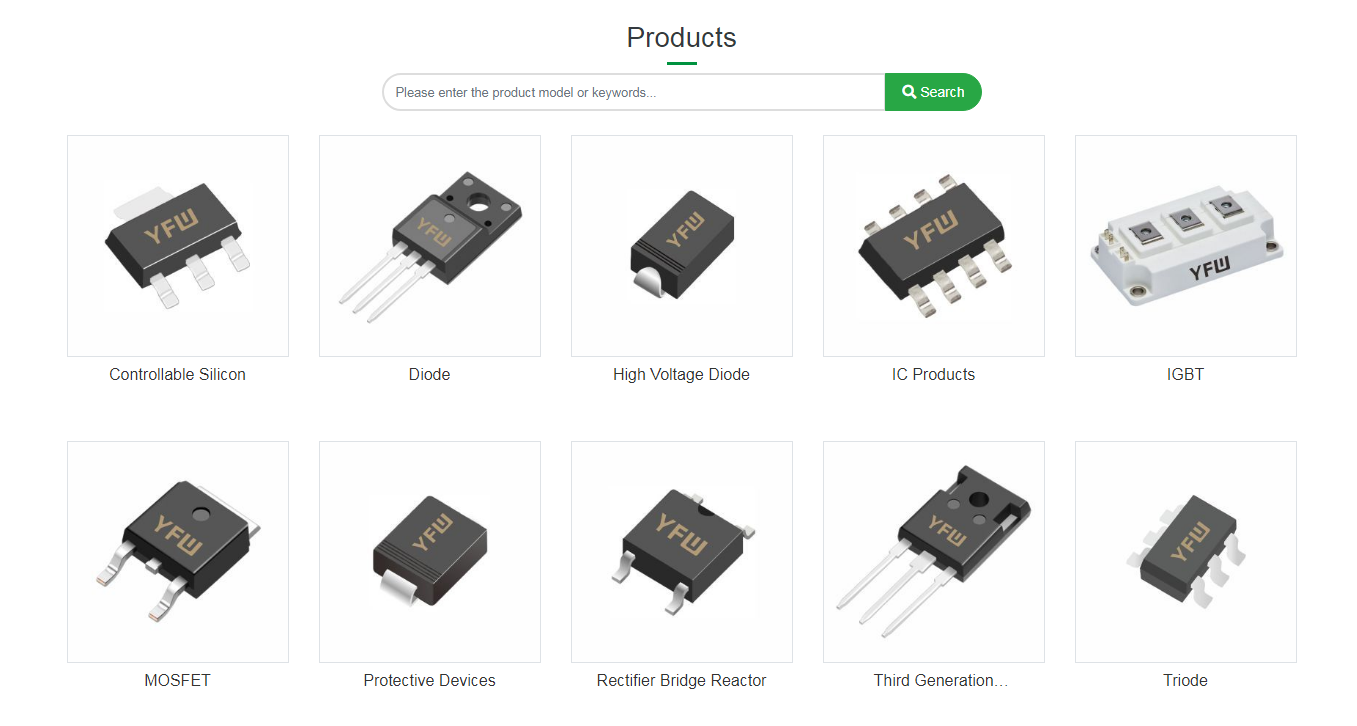Date:2025-03-18 Categories:Industry News Hits:906 From:Guangdong Youfeng Microelectronics Co., Ltd(YFW)
A crystal diode, also known a semiconductor diode, is a diode made of semiconductor materials. Its main characteristic is unidirectional conductivity. In circuits, crystal diodes are mainly used for rectification, they are also widely used in circuits such as modulation and demodulation, frequency modulation, and frequency division. A crystal diode consists of a PN structure, where P a positive-type semiconductor and N is a negative-type semiconductor. In the absence of an applied voltage, a spontaneous electric field, known as a potential barrier or blocking layer, form at the PN junction between the P and N regions. When a forward voltage is applied to the PN junction (i.e., the P region is connected to the positive and the N region is connected to the negative pole), the potential barrier is eliminated, and the diode conducts; when a reverse voltage is applied to the PN junction, the barrier increases, and the diode is turned off. The identification method for crystal diodes is relatively simple. First, a preliminary judgment can be made based on the appearance characteristics the diode. Crystal diodes generally have a marking that indicates the positive and negative poles of the diode. Second, a specialized diode tester or multimeter can be for measurement. In the diode position of the multimeter, if a voltage drop of about 0.5-0.7V is displayed during forward measurement (the red contacts the anode of the diode, and the black probe contacts the cathode of the diode), it indicates that the diode is conducting forward; if the display infinite or exceeds the measurement range during reverse measurement, it indicates that the diode is turned off in the reverse direction. If the diode does not conduct in either direction or both, then this diode may be damaged. The application of crystal diodes is very extensive, and its main functions are as follows: 1. Rectification function: In such as power adapters and battery chargers, crystal diodes are used to convert alternating current into direct current. 2. Voltage stabilization function: In regulated power supplies, diodes can provide stable output voltage. 3. Switch function: In various electronic devices, crystal diodes can be used as electronic switches to control the flow of current. . Signal demodulation: In radio reception devices, crystal diodes can convert modulated radio signals into audio signals. 5. Protection function: In circuits, when the voltage a specific value, crystal diodes can conduct, playing a role in protecting circuit components from burning out. In summary, crystal diodes are an indispensable part of electronic devices and their development and application have promoted the progress of modern electronic technology.

Previous:The flyback diode circuit formed when the relay is opened will not damage the power supply, right
Next:NZT560A 1A 80V SOT-223 Marked NZT560A Small Signal Transistor Y Micro Brand